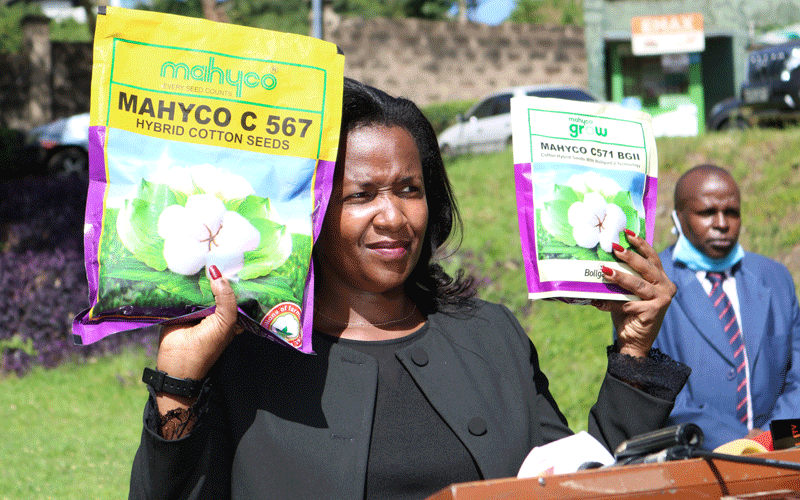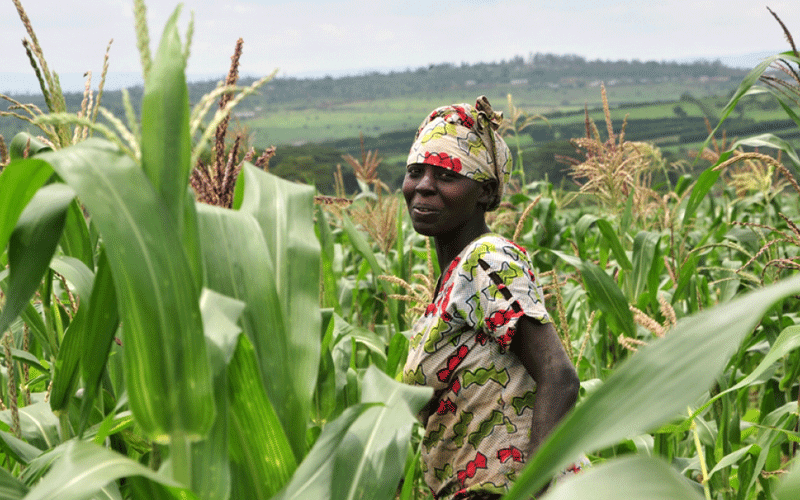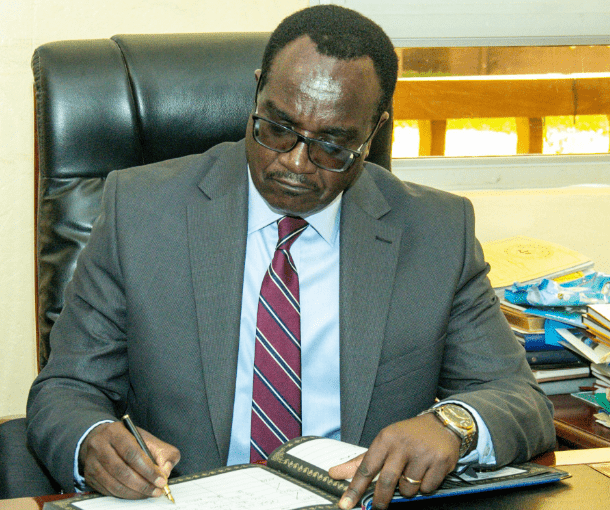Kenya becomes sixth African country to embrace Bt cotton

The full commercialisation of Genetically Modified Bt cotton has started in earnest after the government supplied one metric tonne to 720 farmers in 24 counties.
The move places Kenya as the sixth African country to adopt Bt cotton after South Africa, Sudan, Ethiopia, Malawi, Nigeria and the Kingdom of eSwatini (Swaziland).
The 720 will be demonstration sites, ending 19 years wait since the first trials were carried out in 2011 at the then Kenya Agricultural Research Institute (KARI), now Kenya Agricultural Research and Livestock Organisation (KARLO).
Agriculture CS Peter Munya in a statement read on his behalf by Agriculture CAS Ann Mukami said the seeds are worth Sh 64 million.
“We are flagging off 16 metric tonnes of Bt and Hybrid cotton seeds to farmers for free.
One metric tonne is for Bt cotton while 15 metric tonnes are for Hybrid seed,” she said.
The non-Bt hybrid Cotton and Bt cotton seeds have been procured from Mahyco Seed Company, will be distributed to; Busia, Bungoma, Siaya, Kisumu, Homa Bay, Baringo, Elgeyo/Marakwet, Kilifi, Kwale, Tana River and Lamu.
“These demonstration sites will be used for teaching farmers and extension service providers from all over the country so that full commercialisation is done during the October/November short rains season,” she said.
Mukami said the Bt and Hybrid cotton would improve production in a country that has a deficit of 250,000 bales annually.
Bt cotton protects itself from damage by the African bollworm, a caterpillar pest.
Under the technology, strains of the bacterium Bacillus thungiensis (hence Bt) produce toxins that kill the bollworm, the most devastating of the cotton pests, which long developed resistance against insecticides such as synthetic pyrethroids.
This reduces the number of sprays needed from 12 per season, to about 3-4 per season reducing substantially the cost of production where current cotton grown takes 45 percent of total cost .
The CAS said Cotton can potentially be grown in 24 counties in arid and semi-arid areas.
“The country has the potential to grow up to 260,000 bales, but currently, the sub-sector is producing a meagre 10,000 bales of lint annually against the domestic market demand of 110,000 bales,” she said.
She added while the potential land is 400,000 ha, presently only fewer than 30,000 ha is being utilized.
With the drop in cotton prodution, only five out of 22 ginneries are operational in Kenya as of 2017.
On the safety concerns of the GM Bt cotton, KARLO Director General Dr Eliud Kireger said it has a history of safe use, having been in the market for over two decades.
“The crop’s safety evaluation has been done according to international scientific standards,” he said.
World Health Organization (WHO) and Food and Agricultural Organisation (FAO) accept these standards.
Mukami said Kenya is eyeing US textile market which is tax free under African Growth and Opportunity Act (AGOA) where Africa continent supply less than 2 percent of potential market.
“Apart from AGOA, Kenya textile enjoys other preferential treatment in EU and COMESA markets.
It also has opportunities in targeted manufacturing to supply apparels in the local market and for home textiles and home décor,” she said.










